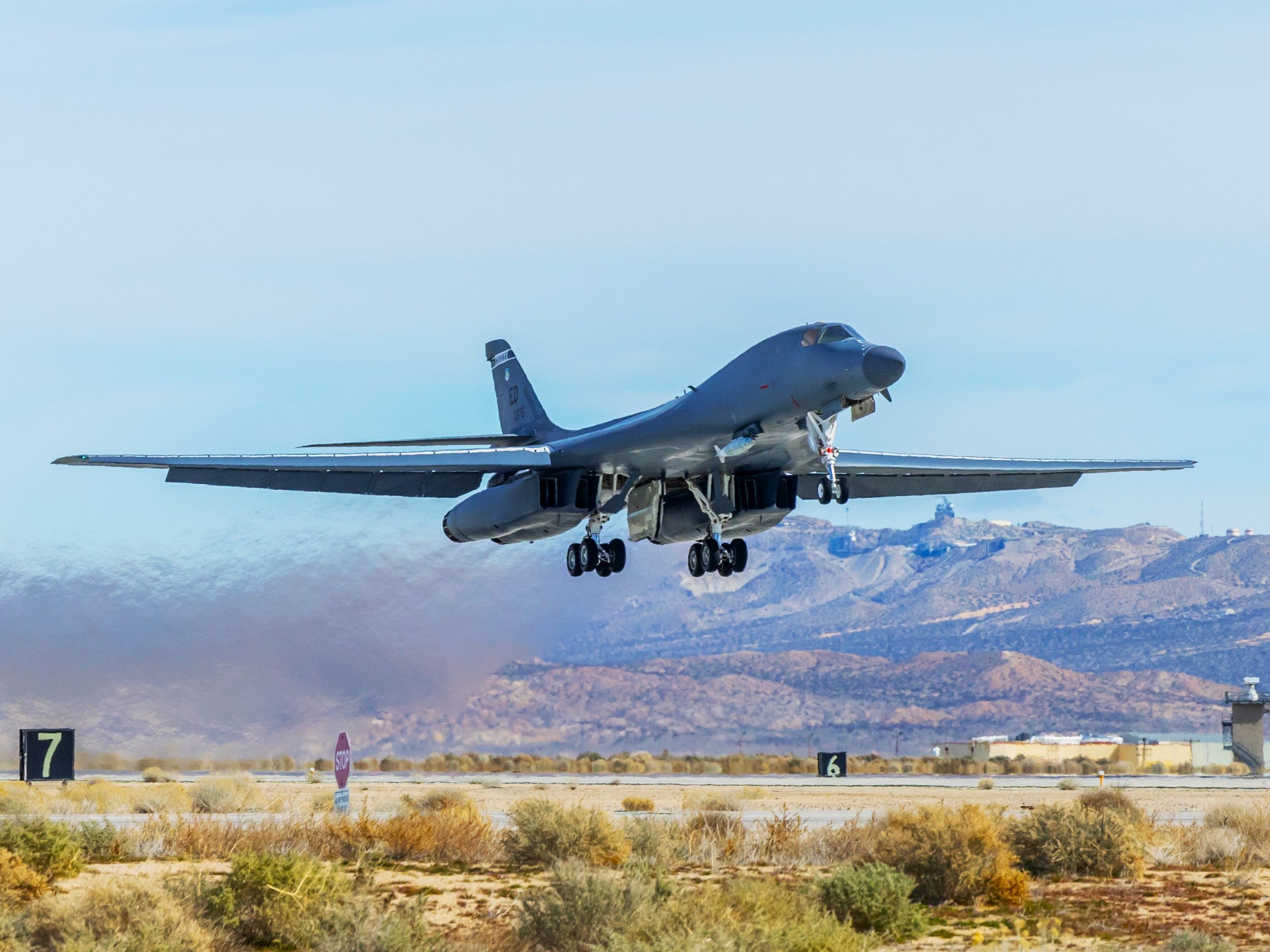Summary Boeing funded new pylon for B-1B to relieve pressure on B-52 testing team. B-52H modernization projects have prompted shift to B-1B for hypersonic testing. LAM Pylon tested on B-1B hardpoint for GPS-guided bombs but not yet for hypersonics.
The US Air Force is getting a new pylon for the B-1B Lancer. The new pylon developed by Boeing initiative with Boeing funding, called a Load Adaptable Modular (LAM) Pylon, is intended to not just shift hypersonic testing from the B-52H to the B-1B but also give the B-1B new capabilities. Why did Boeing fund building a new pylon? Boeing, which bought the B-1B Lancer’s manufacturing corporation, Rockwell International, in 1996, has taken over research and development of the B-1B Lancer.

With multiple upgrades in progress on Boeing’s B-52H Stratofortress product, Boeing wanted to relieve some pressure on the B-52H testing team and saw an opportunity with a new pylon to give hypersonic testing work to the B-1B Lancer. Back on May 19, 2023, Air & Space Forces Magazine quoted Jennifer Wong, Boeing’s director of bomber programs as explaining, “Because of all the modernization efforts on the B-52, we can actually not take away from what we’re doing on the B-52 today to have it test hypersonics. So we will be doing hypersonics testing on the B-1.
” What modernization efforts on the B-52? Actually there are quite a few modernization projects in the works. B-52H modernization requiring work to shift The B-52H is being modernized into the B-52J, which will have new engines, as well as new communications gear, navigation equipment, and radars. That’s a lot for the B-52 test team to have to work with, and then there’s the sensitive matter of 30 of the 76 B-52s left likely having to regain their nuclear capabilities.
A look at what it takes to make a B-52H nuclear capable and why the interest in restoring that capability. With all these new electronics and engines needing testing and then installing, the workload is immense on operational test and even operations . Yes, there are eight of the 76 B-52s left doing testing and 10-12 of the 76 B-52s that will be in depot, repair or upgrade – the numbers are not good for having a sustainable operational B-52 fleet.
All of these details prompted Boeing to invest in a new pylon to shift testing to another Boeing platform in the B-1B, but there are challenges there also. But the LAM Pylon has only tested on a critical B-1B Lancer hardpoint..
. One should note that according to photos and the August 6 Air & Space Forces Magazine report , the only testing on the LAM Pylon is where B-1B Lancers carry the AN/AAQ-33 Sniper AT targeting pod. This pod allows B-1B Lancers not just to search and acquire targets visually but also generate their own GPS coordinates via a laser designator to pass onto GPS-guided weapons like the Joint Direct Attack Munitions or JDAM glide bombs that have been so effective in America’s wars since 1999.
One can see the Sniper AT pod clearly in the US Air Force photos below: One can also watch a Lockheed Martin video on the Sniper AT: However, four LAM pylons have been built so far on Boeing funds, and the Sniper AT targeting pod is not helpful in targeting hypersonic long-range missiles. The LAM pylons are also intended for B-1B external use only – reactivating the attach points originally intended for nuclear AGM-86 Air-Launched Cruise Missiles. Helps that the deactivation was due to the New START treaty the Russians have walked away from.
Keep up with the latest Simple Flying coverage of military aviation here Finally, a July 25 Edwards Air Force Base statement stated that the LAM pylons are intended to be used on other aircraft as needed. However no such testing on other aircraft is occurring right now. Testing going well According to the video by 412th Test Wing Public Affairs based out of Edwards Air Force below, the LAM pylon has been tested not just for fit with the B-1B but also for communications with weapons, flutter, stability, and weapon drops.
However, the testing so far has been with GPS-guided bombs and not hypersonics. Additionally, according to the August 6 Air & Space Forces Magazine report, Joseph Stupic, senior materiel leader for the B-1 bomber division shared, “We actually flew it behind a tanker to see what the handling qualities were with a large store on the outside.” Such is the success of testing so far on the LAM pylon.
The hope is to be able to build enough LAM pylons for the US Air Force’s remaining 45 B-1B bombers to carry more than hypersonic weapons on the LAM pylons, such as the subsonic AGM-158 Joint Air-to-Surface Standoff Missile (JASSM) cruise missiles and AGM-158C Long Range Anti-Ship Missiles (LRASM). Bottom line The story of the LAM pylons on the B-1B Lancer is a success story for Boeing, as Boeing invested in the innovation and initial development of a piece of kit to make the B-1B Lancer far more capable and adaptable as a supersonic precision weapon truck. For the B-1B Lancer, having the capability to launch a hypersonic weapon via the LAM pylon means the capability to suddenly lob a precision, high-speed weapon at range into a target area.
.



















